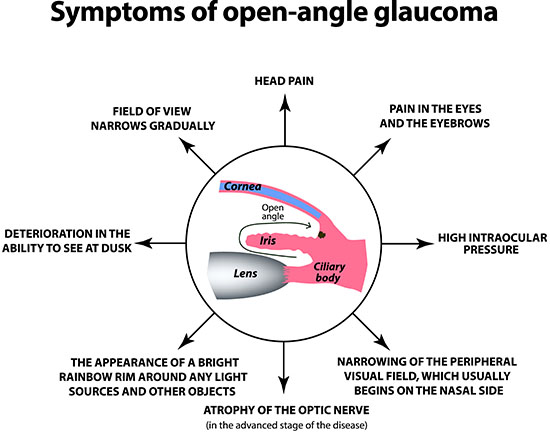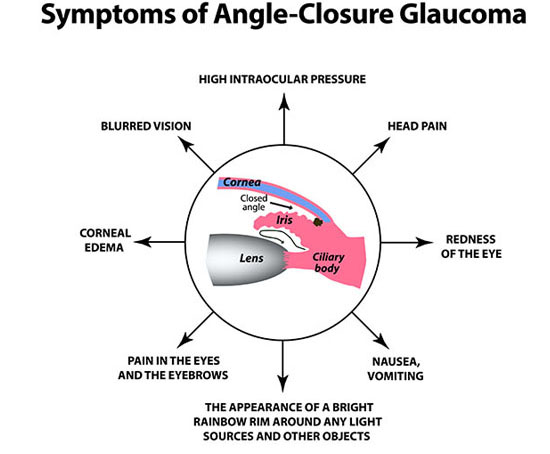
Over 3 million Americans have glaucoma but only half are aware that this condition is affecting their vision. Glaucoma often goes unnoticed in early stages as it may not cause an immediate vision change or pain. If you have glaucoma, there may be no warning signs or symptoms until your vision has been affected with irreversible damage.

The two most diagnoised types of glaucoma are Primary Open-Angle and Angle-Closure Glaucoma.
Primary open-angle glaucoma is the most common form of glaucoma. This occurs as the eye becomes less efficient in fluid drainage causing an increase of pressure that can damage the optic nerve. Primary open-angle glaucoma usually has no noticeable symptoms and will lead to gradual vision loss if untreated.
Angle-Closure Glaucoma affects the iris, (part of the eye associated with eye color) which blocks the fluid drainage canal entrance causing pressure to build up within the eye suddenly. Symptoms of this form of glaucoma may include severe eye pain, blurred vision, nausea and headache. This is an emergency that can lead to blindness if not treated quickly by an eye doctor.


Early detection of glaucoma is critical for effective treatment. Glaucoma can be detected through a comphrensive eye exam. Treatments include prescripiton eye drops, laser treatments or in some cases surgical intervention.
Glaucoma usually affects people over age 40, but can occur sooner. Although everyone is at risk for glaucoma, some groups are at higher risk. People over age 65, those with a family history of glaucoma, diabetics, people who are nearsighted, those with high blood pressure or those who have had severe or traumatic eye injury are at elevated risk for glaucoma. African-Americans and Asian-Americans also have a higher risk for glaucoma. For anyone having these risk factors, a thorough eye exam is recommended annually.
California Eye Professionals makes use of state-of-the-art computerized examination techniques to detect early evidence of glaucoma. Early diagnosis is critical to reducing optic nerve damage and peripheral vision loss that is associated with glaucoma.
California Eye Professionals has three central office locations in Temecula, Menifee, and Hemet, California. Each office offers general eye examinations and eye consults. Our optical boutiques featuring designer frames and contacts are available for patients to browse at each location.
Click on each location for details